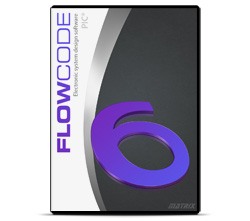Difference between revisions of "Main Page"
| Line 60: | Line 60: | ||
<br />__NOTOC__<br /> | <br />__NOTOC__<br /> | ||
| − | |||
| − | |||
| − | |||
| − | |||
| − | |||
| − | |||
| − | |||
| − | |||
| − | |||
| − | |||
| − | |||
| − | |||
| − | |||
| − | |||
| − | |||
| − | |||
| − | |||
| − | |||
| − | |||
| − | |||
| − | |||
| − | |||
| − | |||
| − | |||
| − | |||
==Flowcode Help== | ==Flowcode Help== | ||
Revision as of 09:33, 4 March 2014
| Developer | Matrix Multimedia |
| Initial release | 3rd September 2013 |
| Development status | Active |
| Written in | C++ |
| Operating system | Windows XP |
| Platform | IA-32 and x86-64 |
| Available in | Over 20 languages |
| Type | Advanced graphical programming software |
| License | Proprietary |
| Website | www.matrixmultimedia.com |
| Blog site | www.matrixmultimedia.com/blog |
Welcome to the Matrix Multimedia wiki, here you can find out and learn all you need to know about Flowcode 6 (and more!), from easy to follow exercises such as creating and saving a flowchart to technical API functions.
From this page you can navigate the wiki and follow the base learning structure which has been set in place for your benefit, you can also search for articles to find out specific functions or components for useful information to help you get the most out of Flowcode 6.
There are links to our official Youtube videos throughout the wiki to help you learn about Flowcode, these videos are a few minutes (1 minute - 4 minutes) long and show you how to use features and functionality in Flowcode, these resources are very useful and can help you further understand Flowcode.
These videos can also be found on the Flowcode Help Videos page at the Matrix Multimedia website.
For more information about Flowcode as well as news, announcements and events including our general activity at Matrix see our blog site www.matrixmultimedia.com/blog, which is updated regularly and consists of various articles from different staff, from information and events in the new building to new additions to the team as well as new projects and applications.
Flowcode Help
Flowcode Basics
Learn how to use Flowcode 6 and participate in practical exercises to improve your skills and knowledge of Flowcode. This explains the basics of Flowcode and how to use it effectively and efficiently. All users should at least skim through this section to learn about new features and methods integrated into Flowcode 6. New users are advised to start here to learn Flowcode from the base up.
Concepts
Complex methods, techniques and functionality used in Flowcode explained in a robust and practical manner, with reference to conventions used outside of Flowcode as well as information linking to functionality directly integrated within Flowcode.
Exercises
List of all exercises including the exercises used in Flowcode Basics section as well as additional exercises to further improve your skills, the exercises are set in a practical and informative structure. Advanced users can start here and use these exercises to familiarize themselves with the new interface, features and functionality.
Component Help
List of components which provide detailed information about individual components as well as examples of them in use, the information provided includes component and simulation macro references as well as property references and component functionality.
Simulation Events
Structured overview of Events providing technical information for individual functions, each article contains information of the parameters and return value, a detailed description and an example of the Event.
Simulation API
See also API Reference
Structured overview of Simulation API explaining individual functions and technical information, the API reference page also provides a similar purpose although in a more open and expanded list to show each individual function under its class.
Features
This section lists the articles about features in Flowcode 6 which are structured into the Flowcode Basics section so you can easily find information on specific features and learn how to use them effectively and efficiently. This section helps accompany other content to provide extra information to help you use the features correctly and understand them enough to use them to their full potential.
Frequently Asked Questions
Frequently asked questions (FAQ) regarding Flowcode 6, including changes from version 5, new features and altered functionality. Commonly asked questions feature general information regarding component properties, local, constant and global variables and exporting macros.
Upgrading from previous versions
Migrating to V6
A mix of important information for migrating/upgrading from version 5 to version 6 of Flowcode including practical changes such as the positioning of components on the panels, technical changes such as the software & hardware channel selection changes and other information e.g. a table listing the status of component migration to Flowcode 6.
